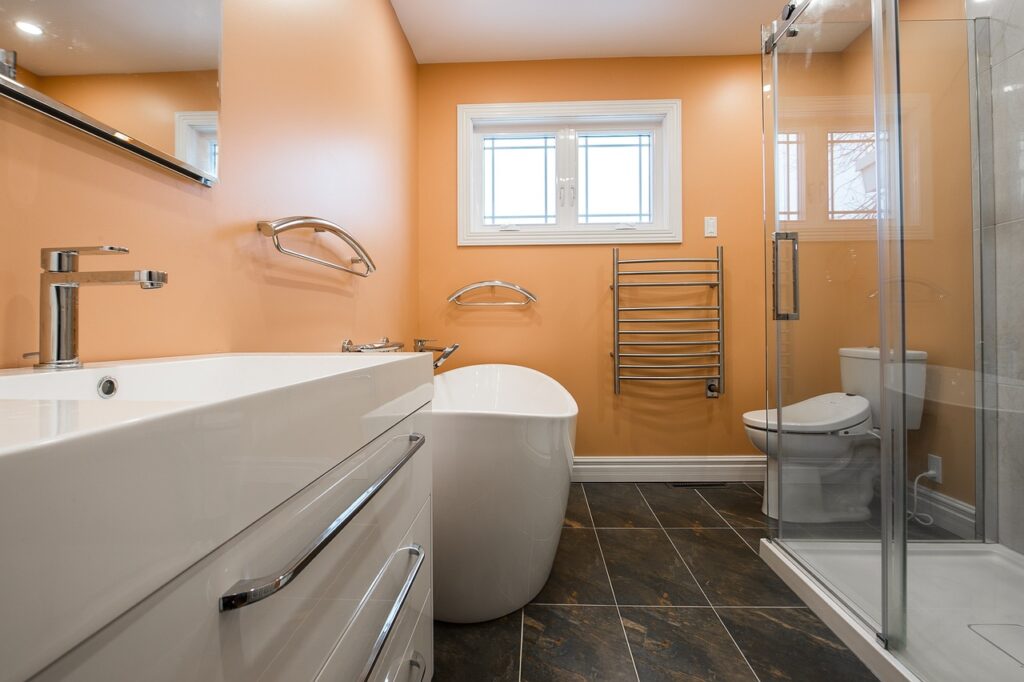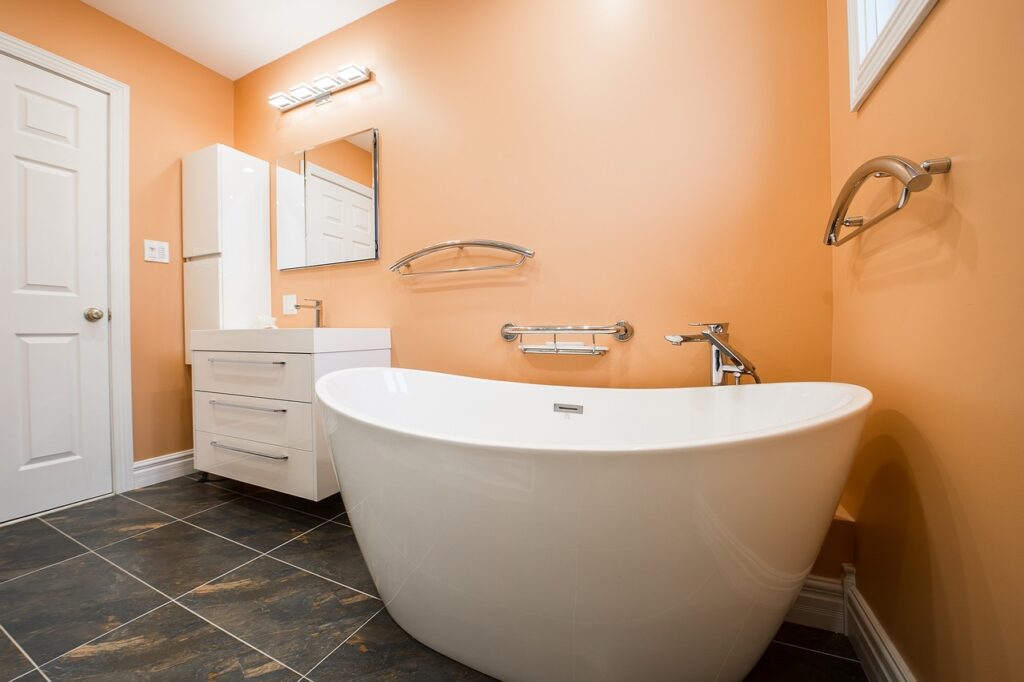In the quest to ensure your home maintains its pristine splendor, the condition of your bathtub becomes pretty significant. This write-up titled “Why Do Tubs Need To Be Resurfaced?” ventures into the reasons why your tub needs a regular resurface, offering a rich canvas of knowledge that portrays not only the aesthetic importance but also the cost-effectiveness of professional resurfacing services. Plunge into this engaging article and discover how to retain the brilliance of your bathtub, while ensuring it stands as a lasting symbol of elegance in your bathroom.
Understanding Bathtub Resurfacing
Bathtub resurfacing is the process of giving your bathtub a fresh, new look without having to go through the stressful and expensive process of replacing it entirely, as well as having to deal with construction mess along the process.
Definition of bathtub resurfacing
You might get puzzled upon hearing the term “bathtub resurfacing” for the first time. Well, it’s a pretty simple concept. Bathtub resurfacing, often also referred to as bathtub reglazing or refinishing, is a cost-effective option for those who are not ready for replacements. It basically involves the application of a new coating on top of your old bathtub, allowing it to hide any flaws and give a completely fresh and polished look.
Overview of the resurfacing process
The resurfacing process primarily involves cleaning the tub surface, removing any kind of debris or loose material. The next step involves the repair of any potential damage such as cracks or rust, followed by applying primer, and finishing off with several layers of coating and sealant.
Professional vs DIY resurfacing
While there are DIY resurfacing kits available in the market, opting for a professional service has its edge. Professionals have years of experience, access to premium materials, and the necessary techniques to get the job done right the first time. However, if you’re someone who enjoys doing things on your own and is confident in your skills, a DIY resurfacing project can be an exciting challenge to undertake.
Signs Your Tub Needs Resurfacing
Identifying the signs when your tub needs a makeover is priceless if you want to avoid unnecessary costs and dilemmas.
Appearance of cracks and chips
If your tub begins displaying cracks and chips, it’s a key indication that resurfacing might be necessary. These minor issues can rapidly turn into leakage problems if not addressed timely.
Stains and discoloration
Stubborn stains and discoloration on your tub could detract from the overall look of your bathroom. If these stains are resistant to regular cleaning, resurfacing could give your tub, and by extension, your bathroom, a much-needed facelift.
Roughness to the touch
A tub surface that is rough to the touch is an indication that its surface has been damaged or worn out. This damage can cause discomfort and even result in small injuries, which makes resurfacing a valuable option.
Leakage issues
Though not directly visible on the tub’s surface, leakage issues are another sign that your tub probably needs resurfacing- especially if the leakage is attributed to minor cracks or chips.
Outdated design or color
Not all signs are damage-oriented. Simply disliking the outdated design or color of your tub is reason enough for considering resurfacing. Changing the color of your tub can dramatically change the entire ambiance of your bathroom.

The Age of Your Bathtub
The age of your bathtub can also be a significant factor contributing to the requirement of resurfacing.
Impact of bathtub’s age on its condition
As with most things in life, your bathtub’s condition deteriorates with age. Older bathtubs are likely to be subject to more wear and tear, making them prime candidates for resurfacing.
How often should bathtubs be resurfaced
While there’s no strict rule on how often bathtubs should be resurfaced, experts suggest that most bathtubs could benefit from resurfacing every 10 to 15 years. This timeframe can vary based on your bathtub’s usage and how well it’s maintained.
How long a resurfaced tub can last
A resurfaced tub can last up to 10-15 years, similar to a new tub, provided they are maintained with good care. Using non-abrasive cleaning materials and avoiding the use of harsh chemicals can further enhance their lifespan.
Cost and Value of Bathtub Resurfacing
When it comes to evaluating the overall cost and value of bathtub resurfacing, there are multiple factors to consider.
Comparing the cost of resurfacing vs replacement
Before you decide to replace your bathtub entirely, it’s a great idea to compare the costs. A new bathtub might seem enticing, but when you add up the cost of the new tub, demolition, plumbing, and tiles, the overall price can be steep. Resurfacing is typically much less expensive and can offer a similar level of aesthetic appeal.
Return on investment for bathtub resurfacing
The return on investment for bathtub resurfacing can be significant. Not only does resurfacing improve the aesthetic appeal of your bathroom, but it can also increase your home’s overall value. It’s a small investment that can reap big rewards in the long run.
The value added to your home
Resurfacing a bathtub can contribute appreciably to the value of your home. A well-maintained and attractive bathroom can be a key selling point for potential home buyers.

Effect of Tub Condition on Hygiene
Collection of bacteria
A worn-out bathtub can become a breeding ground for bacteria and mold, posing a potential risk to your health. Resurfacing effectively eliminates these risks by creating a non-porous and easy-to-clean surface.
Potential health risks
Bacteria and mold can lead to various health problems ranging from minor allergies to more serious respiratory issues. Therefore, your bathtub’s condition is essential to ensure your family’s health and safety.
Improvement of hygiene with resurfacing
Resurfacing improves hygiene drastically by making the tub easier to clean and disinfect, ensuring you and your family a healthy and bacteria-free bathing experience.
Convenience and Time-saving Benefits
Speed of the resurfacing process
The resurfacing process is swift and convenient, typically taking as little as a day. This means that you won’t have to go days or weeks without access to your bathtub as you might with a complete bathtub replacement.
Minimized disturbance in home routine
As the process is quick, the disturbance to your daily home routine is minimal. Especially compared to the time-consuming and strenuous process of entire bathroom remodeling.
Quick refresh of your bathroom’s look
Resurfacing offers a fast and affordable way to upgrade your bathroom’s look dramatically. It’s a powerful way to refresh your bathroom decor without committing to a full renovation.

Environmental Considerations
Waste reduction by resurfacing
Opting to resurface your tub is also a green choice, as refurbishing prevents a perfectly good bathtub from needlessly ending up in a landfill.
The green benefit of bathtub resurfacing
Bathtub resurfacing is an eco-friendly option as it extends the lifespan of your existing tub, preventing unnecessary waste.
Contribution to a more sustainable home
Choosing to resurface contributes to a more sustainable home by decreasing demand for new bathtubs, saving energy used in manufacturing and reducing CO2 emissions associated with the transportation of new tubs.
Preparation for Bathtub Resurfacing
Steps to prep your bathtub
Before a bathtub resurfacing job, your bathtub needs to be thoroughly cleaned. The surface needs to be sanded down to remove the old coating and any stains or rust.
Necessary tools and materials
If you’re going for a DIY approach, you’ll need to have the right tools and supplies. Ensure you have a full list of materials you will need such as paint, epoxy and paint roller, and protective gear such as gloves and goggles.
Safety measures to observe
When resurfacing a bathtub, safety is of utmost importance. Be sure to keep the room well-ventilated and use protective equipment as fumes can be harmful.
Hiring a Professional vs DIY
Hiring a professional or DIY – this decision largely depends on your DIY skills and budget.
Assessing your DIY skills
A DIY bathtub resurfacing project requires a moderate level of handyman skills. It’s not a beginner-level project, so you need to assess your skill level before diving in.
Cost comparison
DIY bathtub resurfacing can save you money upfront. However, if not done correctly, it may cost more in the long run due to potential repairs. Hiring a professional will likely provide a more durable and long-lasting finish.
Time investment
A professional bathtub resurfacing job usually takes a day or less. A DIY project is likely to take up more of your time, so it’s essential to factor this into your decision.
Quality of outcome
While the DIY kits available on the market can provide a decent finish, the results may not match the quality provided by a professional service.
Choosing a Professional Bathtub Resurfacing Service
Understanding what to look for when hiring a resurfacing service is crucial for the best results.
What to look for when hiring a resurfacing service
When on the hunt for a professional resurfacing service, it’s important to look for someone with experience, evidenced by a portfolio of successful transformations. It’s also wise to look for providers that offer warranties on their services.
Questions to ask potential service providers
Before hiring a service provider, make sure to ask about their experience, their processes, any warranties or guarantees they offer, and whether they have any references or reviews from previous clients.
Understanding guarantees and warranties
Typically, a professional service provider will offer a warranty for their resurfacing work. This means if the finish deteriorates or if other issues arise within a specified timeframe, they will fix it at no additional cost. This provides a peace of mind regarding the quality and durability of the work.
In conclusion, bathtub resurfacing is a cost-effective, efficient, and eco-friendly solution to spruce up your bathroom’s aesthetics and hygiene. While DIY is an option, hiring a professional service ensures a substantial transformation backed by experience and craftsmanship. This process not only extends your tub’s life and visual charm but also allows you to contribute towards a sustainable future.
